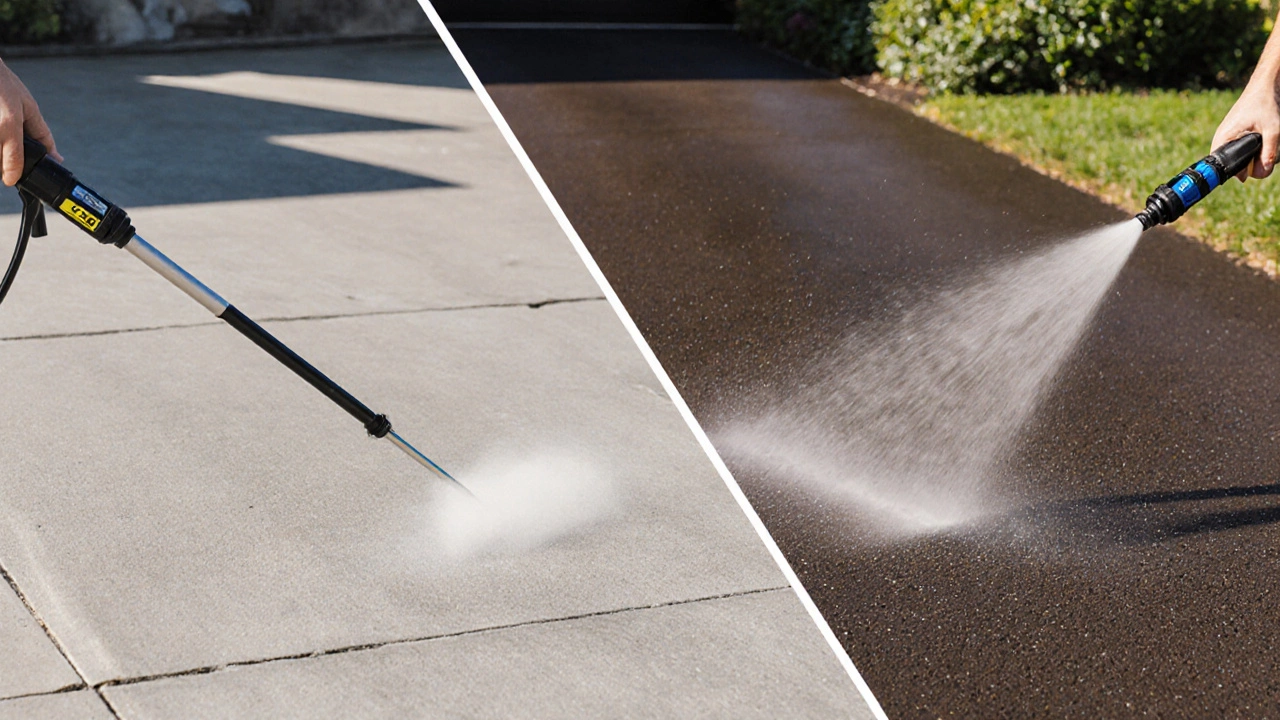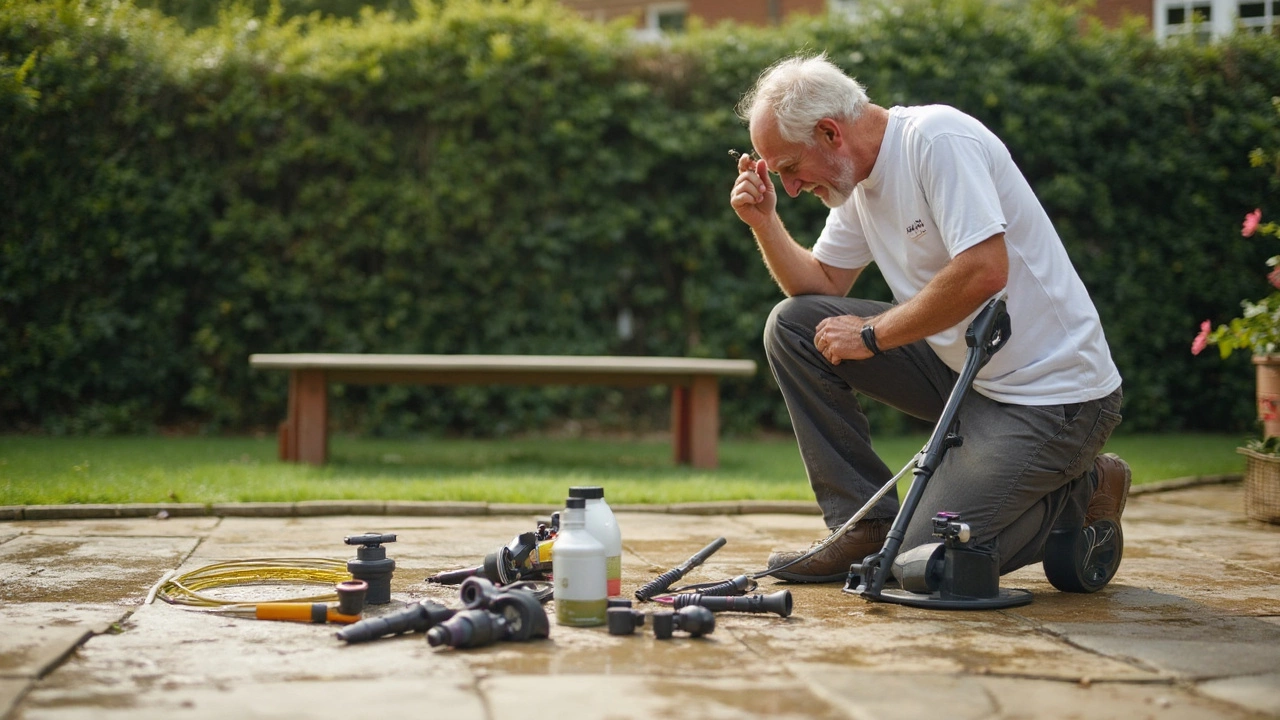Concrete Cleaning Made Simple: Quick Tips and Pro Advice
Concrete surfaces look great when they’re clean, but they can get grimy fast. Whether it’s oil on the garage floor, moss on the patio, or dust on the driveway, a few easy steps can bring back the shine without breaking the bank.
Everyday cleaning tricks
Start with a broom or a leaf blower to push loose debris off the surface. A dry scrape removes leaves, twigs, and sand that can scratch concrete if you scrub too hard later.
For routine cleaning, mix warm water with a few drops of mild dish soap. Use a stiff‑bristled brush and work the suds into the concrete in circular motions. Rinse thoroughly with a garden hose. This combination lifts dirt and light stains without harming the sealant.
Grease, oil, or tar spots need a stronger approach. Sprinkle cat litter, baking soda, or a commercial degreaser directly on the stain, let it sit for 10‑15 minutes, then scrub with the brush. The abrasive texture helps lift the oily residue while the chemical breaks it down.
When the mess is tougher—think paint splatters, hardened mortar, or deep mildew—reach for a pressure washer. Set the nozzle to a 25‑degree fan and keep the wand about 12‑18 inches from the surface. Move the spray slowly and evenly; too close or too fast can etch the concrete.
Always test a small, hidden area first. Some newer sealants can react to high pressure, showing chalky spots. If you see any discoloration, lower the pressure or switch to a garden hose with a scrubbing brush.
When to bring in the pros
If stains remain after a few attempts, or if the concrete is cracked, pitted, or has a worn‑out seal, a professional cleaning service can help. Experts have industrial‑strength cleaners that dissolve stubborn grime without damaging the material.
Professionals also offer deep‑cleaning methods like rotary scrubbing combined with hot water extraction. This process reaches into pores, removes embedded stains, and prepares the surface for resealing.
A fresh sealant not only protects against future stains but also restores the surface’s slip‑resistance. Most homeowners find that a seal lasts 2‑3 years for driveways and up to 5 years for interior floors.
Before hiring, ask for a quick on‑site assessment. A reputable company will explain what they’ll use, how long it takes, and any prep you need to do (like moving vehicles). Transparent pricing and a clear timeline mean fewer surprises.
Keeping concrete clean is a habit more than a chore. Sweep regularly, mop up spills right away, and schedule a professional deep clean every couple of years. With these habits, your driveway, patio, and garage floor will stay looking fresh for years to come.

Driveway Pressure Washing: How Much PSI Do You Need?
Find out the exact PSI needed for concrete and asphalt driveways, learn how to pick the right pressure washer, adjust settings for tough stains, and avoid surface damage.
Read More
Is 2000 PSI Enough to Clean a Concrete Slab? Real-World Pressure Washing Tips
Wondering if a 2000 PSI pressure washer can tackle your concrete slab? This article breaks down how much cleaning power you actually need, what 2000 PSI gets you in the real world, and smart ways to boost results. Learn about the right nozzle choices, how surface type changes the game, and tips for getting the most out of your equipment. If you want clean concrete without destroying your gear or your slab, this guide is for you.
Read More